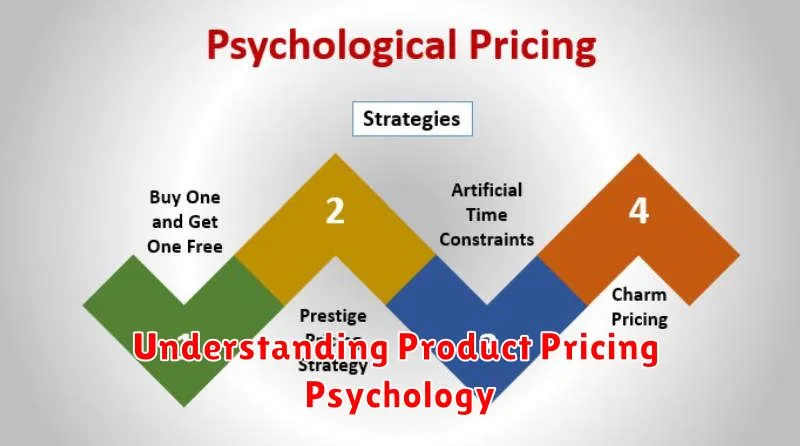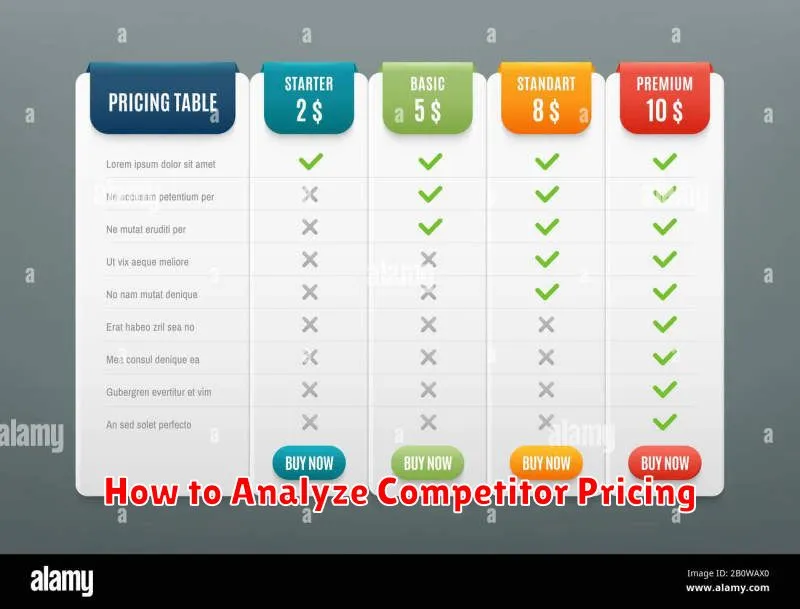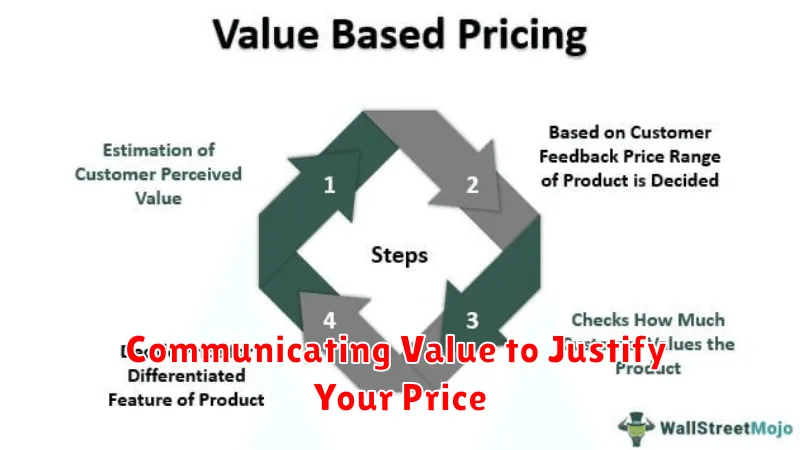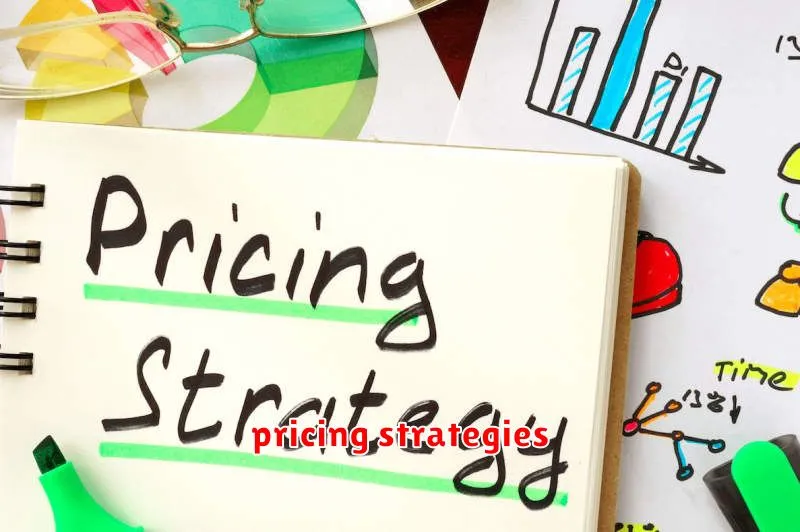Are you struggling to determine the perfect price for your online products? Finding the right pricing strategy is crucial for online success. This article will guide you through effective methods to price your products competitively, maximizing your profit margins while remaining attractive to customers. Learn how to conduct thorough market research, understand your costs, and implement a pricing model that drives sales and achieves your business goals. Discover the secrets to online pricing and unlock your potential for growth!
Understanding Product Pricing Psychology

Pricing your products effectively involves understanding the psychology behind how consumers perceive value. Price anchoring, where a higher price is initially shown before revealing a lower (and seemingly more attractive) price, can significantly influence purchase decisions. Similarly, the “charm pricing” tactic (e.g., $9.99 instead of $10.00) creates a perception of a lower price point, despite the minimal difference.
Reference pricing, comparing your price to competitors, is crucial for establishing competitive positioning. However, understanding your target audience‘s perceived value is paramount. A higher price might signal premium quality, while a lower price may suggest budget-friendliness; aligning your price with your brand image and target market expectations is essential.
Consumers often use mental shortcuts when making purchasing decisions. Presenting your product’s value proposition clearly, highlighting features and benefits, can help overcome price sensitivity. Price bundling can also encourage larger purchases by offering perceived value in the combination. Ultimately, effective pricing balances profit maximization with customer perception of fairness and value.
Cost-Based vs Value-Based Pricing Strategies
Choosing the right pricing strategy is crucial for online success. Two primary approaches are cost-based pricing and value-based pricing. Understanding their differences is key.
Cost-based pricing involves calculating the total cost of producing a product (including materials, labor, and overhead) and adding a markup percentage to determine the selling price. This method is straightforward but may undervalue your product if market demand justifies a higher price.
Value-based pricing, conversely, focuses on the perceived value of your product to the customer. It considers factors like brand reputation, product features, and customer benefits. The price is set based on what customers are willing to pay for that value, potentially exceeding simple cost calculations. This approach requires thorough market research to understand customer perception and willingness to pay.
The best approach often involves a combination of both. You need to ensure profitability (cost-based) while also maximizing revenue based on the value proposition (value-based). Carefully analyzing your costs and understanding your target market’s perceived value is essential for finding the optimal price point for your online products.
How to Analyze Competitor Pricing

Analyzing competitor pricing is crucial for successful online product pricing. Begin by identifying your key competitors. Consider businesses offering similar products or services targeting the same customer base.
Next, thoroughly research their pricing strategies. Note the price points for comparable products, any discounts or promotions offered, and their overall pricing approach (premium, value, etc.). Consider using price comparison websites or directly visiting competitor websites.
Assess their value proposition. Understanding why customers choose them (e.g., superior quality, brand recognition, added services) helps you contextualize their pricing. A higher price might reflect a stronger value proposition.
Finally, consider the market context. Look at overall market trends and economic conditions. A competitive market might necessitate lower prices initially to gain traction.
Remember to combine your competitor analysis with your own cost analysis and profit goals to arrive at a profitable and competitive price for your products.
Using Bundling and Tiered Pricing for More Sales
Strategic pricing is crucial for online success. Bundling and tiered pricing are powerful techniques to boost sales and increase average order value.
Bundling involves offering multiple products together at a discounted price compared to buying them individually. This encourages customers to purchase more and perceive greater value. For example, offer a “starter kit” bundling complementary products.
Tiered pricing creates different pricing levels based on features or quantities. This caters to diverse customer needs and budgets. A basic, premium, and deluxe tier, each with incremental features, can effectively increase sales by appealing to a broader market.
Careful consideration of your target audience and product offerings is key to implementing these strategies effectively. Analyze your data to identify which bundles and tiers are most appealing to your customer base.
By cleverly utilizing bundling and tiered pricing, you can significantly enhance your sales performance and optimize revenue streams.
Discounts and Promotions Without Hurting Profit
Offering discounts and promotions is crucial for attracting customers and boosting sales, but it’s essential to do so strategically to avoid impacting your profit margins. Carefully consider your pricing strategy and the costs associated with your products before implementing any promotions.
One effective approach is to focus on high-margin products. Offering discounts on these items allows for greater flexibility, as you can still maintain a healthy profit even after reducing the price. Alternatively, consider promotions that increase overall sales volume, such as bundled offers or loyalty programs, rather than solely focusing on price reductions.
Targeted promotions are also highly beneficial. Instead of across-the-board discounts, segment your customer base and offer personalized promotions based on purchase history, browsing behavior, or demographics. This allows you to maximize impact and minimize unnecessary reductions on your entire product line.
Another key strategy is to manage customer expectations. Clearly communicate the limited-time nature of promotions and the value proposition, ensuring customers understand the limited-time opportunity. This can increase the urgency to purchase without needing deeply discounted prices.
Finally, monitor your key performance indicators (KPIs) closely. Track sales, conversion rates, and profit margins throughout any promotional period. This data allows you to assess the effectiveness of your promotions and make adjustments for future campaigns, ensuring your pricing strategy remains profitable.
Dynamic Pricing: When and How to Use It
Dynamic pricing, also known as surge pricing or time-based pricing, automatically adjusts product prices based on real-time market factors. This strategy is particularly effective in online marketplaces with fluctuating demand.
When to use it: Dynamic pricing is most beneficial when dealing with perishable goods (e.g., airline tickets, hotel rooms), products with highly variable demand (e.g., concert tickets, event tickets), or when facing intense competition. It allows businesses to maximize revenue by capitalizing on periods of high demand and remaining competitive during slower periods.
How to use it: Implementing dynamic pricing requires sophisticated software capable of analyzing various data points, including real-time demand, competitor pricing, inventory levels, and even weather patterns. Effective use also necessitates careful monitoring and adjustment of pricing algorithms to ensure prices remain competitive and profitable. Consider A/B testing different pricing models to optimize your strategy. Transparency is crucial; clearly communicate dynamic pricing policies to customers to avoid negative experiences.
Important Considerations: While dynamic pricing can boost profits, it’s crucial to avoid drastic price fluctuations that could alienate customers. A balanced approach that prioritizes fairness and customer satisfaction is essential for long-term success.
How to Test and Adjust Your Pricing
Testing your pricing is crucial for online success. Start by researching your competitors’ prices and understanding your own costs. Then, implement A/B testing with different price points for the same product. Analyze the results to determine which price yields the highest profit margin and conversion rate.
Monitor key metrics such as sales volume, average order value, and customer acquisition cost (CAC) to assess the effectiveness of your pricing strategy. Regularly analyze these metrics and be prepared to adjust your prices based on market demand, competitor actions, and seasonality. Consider using dynamic pricing models that automatically adjust prices based on real-time data.
Remember to always clearly communicate your value proposition to justify your pricing. If you offer superior quality or unique features, ensure your pricing reflects that. Regularly review and refine your pricing strategy; it’s a continuous process that requires flexibility and adaptation.
Communicating Value to Justify Your Price

Pricing your products effectively is crucial for online success. Simply stating a price isn’t enough; you must clearly communicate the value your product offers to justify that price. Customers need to understand what they’re getting for their money.
Highlight key features and benefits, not just specifications. Focus on how your product solves a problem or improves the customer’s life. Use strong action verbs and benefit-driven language. For example, instead of “Durable construction,” use “Built to last for years, saving you money on replacements.”
Employ various communication strategies. Use high-quality product descriptions that emphasize value. Showcase customer testimonials and social proof. Create compelling visuals that illustrate your product’s benefits. Consider offering different pricing tiers to cater to various customer needs and budgets.
Emphasize the return on investment (ROI) your product provides. If possible, quantify the savings or benefits your product delivers, making the price seem less significant in comparison to the long-term value.
Ultimately, effective communication boils down to understanding your target audience and speaking directly to their needs and desires. By demonstrating the value proposition clearly and convincingly, you can command a fair price and achieve online sales success.

